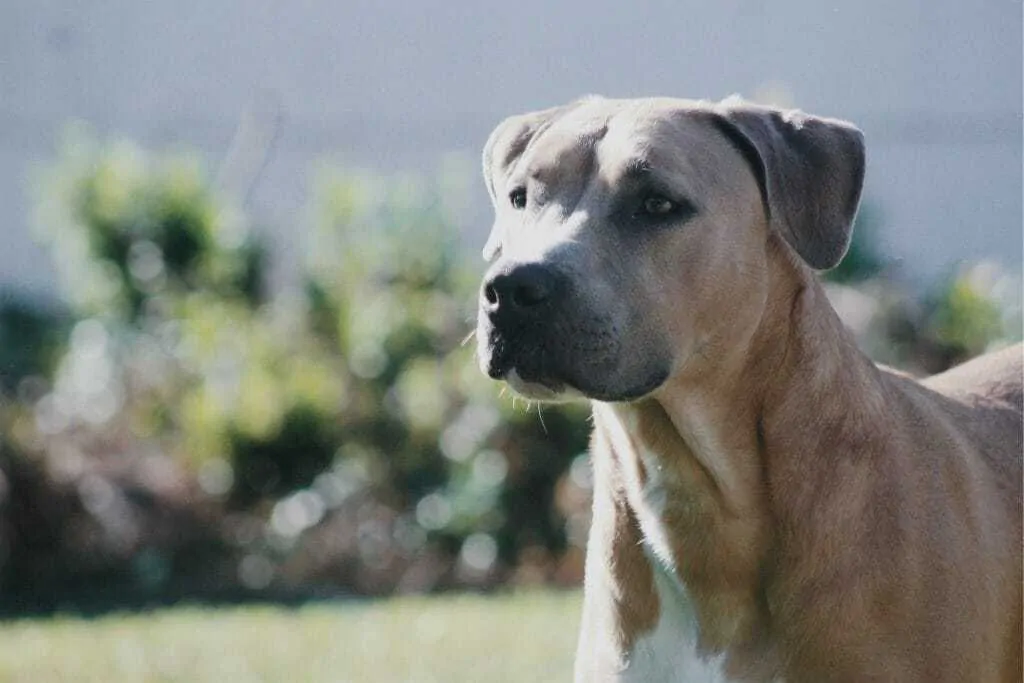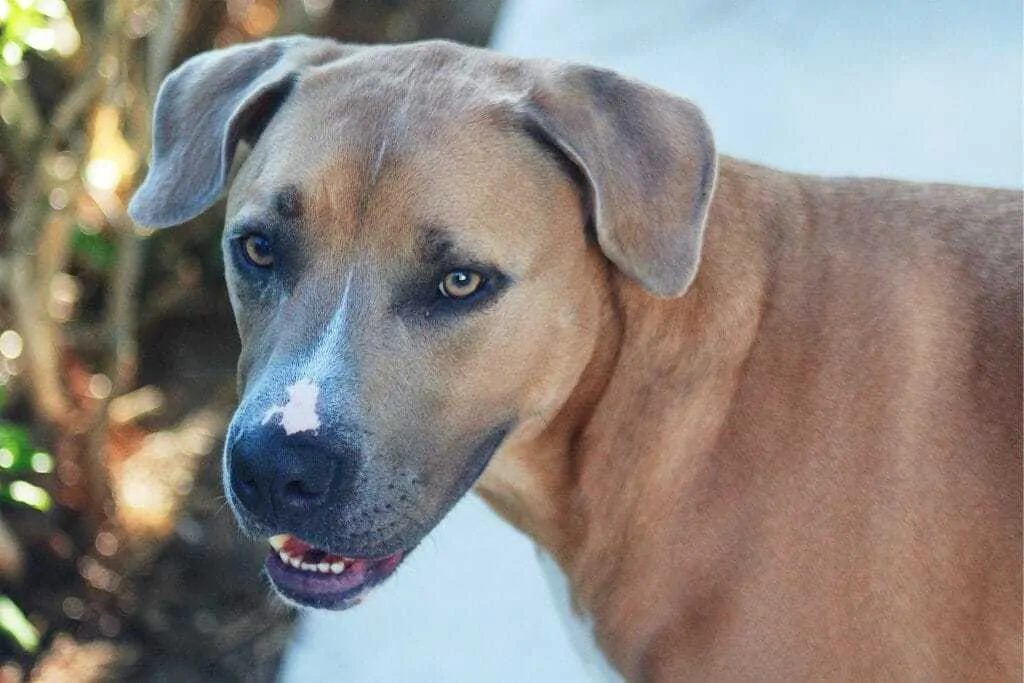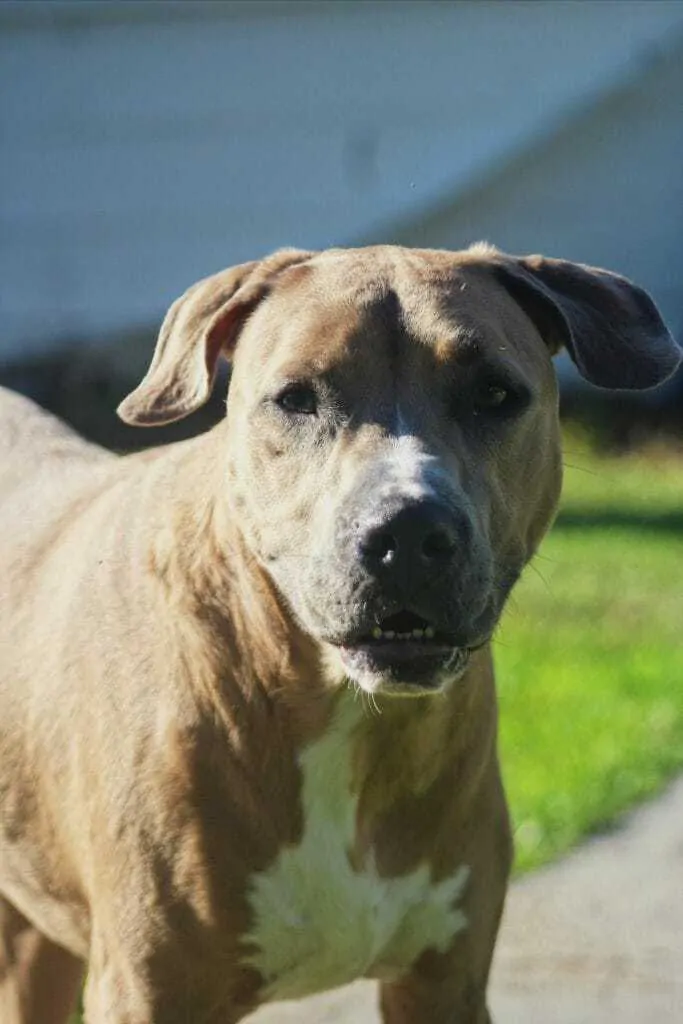Dogs are life long snuggle buddies and forever friends. They comfort you in times of need, celebrate your accomplishments and, know how to give some sloppy kisses. They are faithful, loyal and, good companions. From sled to service dogs, these animals have shown their value to us. Generations of strong, healthy breeds have shown the importance of dogs in our lives. The end result, however, of a healthy, obedient family dog is not always the product of a good life start. Not all dogs grow up in loving families and are well cared for. Some dogs that have had a rough start still deal with the post-traumatic stress of their upbringing. Dogs with trauma still deserve our tender love and care. There are ways to know the signs of a dog that has suffered emotional and physical trauma and ways to help in their healing.
“Pit” in “Pitbull” actually stands for a mixed breed, making all Pitbulls a breed of several different types of dogs. This Pitbull/Boxer breed is actually a mix of Bulldog, Boxer and another unknown breed. Sometimes shelters cannot identify the true breed of every dog that comes into their care, making them a “mutt” breed like my dog Chance. Self-Taken.
What Is Emotional And Physical Trauma In A Dog?
Dogs can suffer from both emotional and physical traumas that result in PTSD. PTSD is an anxiety disorder that develops as a result of a traumatic experience and involves symptoms of vigilance such as over-awareness of sights, smells and sounds and re-experiencing past trauma. Both emotional and physical suffering is brought on by physical things. Dogs might develop emotional trauma through:
- Natural disasters
- Abandonment
- Military combat
- Neglect
- Bad interactions with other dogs
Dogs who develop physical trauma are:
- Abused
- Mistreated
- In serious accidents
- Also, go through bad interactions with other dogs
Emotional trauma in a dog is handled differently than physical trauma, depending on the dog, their past, and the reason for the trauma. Knowing your dogs’ past medical history and relationship to a prior owner is important when providing the right kind of care.
My shelter dog, Chance, is a dog with high past trauma. He was shot in the shoulder, ran away from home and was run over by a big truck. After being rushed into emergency surgery and placed in the Humane Societies ICU, my family and I were asked to take him into our care during his recovery.
Knowing The Signs Of Trauma
The manifestations of trauma come at different times and at different rates.
- A tucked tail
- pinned ears
- cowering
- panting
These types of symptoms are signs of trauma. However, they are rated small compared to other symptoms. Higher rated symptoms of trauma are
- Shaking
- Hiding
- Urination and/or defecation when the trigger attempts to interact
- Howling
- Pacing
- excessive vocalization
- over aggression
Hyper-awareness during an episode can skyrocket as well, making a pin drop seem like a bomb explosion to an anxious animal. A dog with more serious trauma is likely to experience worse episodes. An episode can last anywhere from a few seconds to several hours and can come and go within that time period. Most animals are triggered for only a few seconds and then let it pass, but some need more time and care.
What Can You Do To Help Your Traumatized Dog?
Understanding your companion’s triggers is beneficial in helping prevent episodes.
Popular triggers include:
- Loud noises
- Sudden movements
- Cars
- Guns
- Men
- Shadows
- Going downstairs
Removing or monitoring these triggers helps you and your dog. Simple acts like locking a gun in a safe, watching the noise level inside and putting up a doggy gate can make a world of difference for a scared animal.
It is important to not crowd your dog during an episode. Spend a moment observing them and see if you can pick up on their triggers. Once you know your animals’ triggers, you can begin to work with your dog to help them feel more confident.
Proper training is a great start when working with an animal with PTSD. Many dogs who suffer regularly with their anxieties need more time and space during training. Generally, there are too many distractions in a group training class and not enough time. Consider one-on-one training for your dog. This kind of training provides a reliable, long-lasting service to you and your companion. Not only do they learn in an environment better suited to them, but so do you. Your trainer will inform you on leash holding, proper walking techniques, and the right equipment. They can also use the time they have to get to know your dog and inform you of the breed type.
Proper exercise helps in a dogs recovery as well. A minimum of 30 minutes of exercise helps a dogs mental and physical state. Even dogs who are physically injured and can move some will benefit from it. Walking a dog around the house for a few laps will help. Getting outside and letting your dog run around the front or back yard is a great way to help them get cardio and some sunlight. Including toys in their exercise helps them have more fun and keeps them engaged longer. There are plenty of Toys That Will Keep Your Dog More Fit and help with their physical health.
Proper nutrition will also accommodate a dog in recovery. Most PTSD recovery training is about dealing with an animals’ mindset toward a certain trigger. A healthy diet will help a dogs brain become stronger as they go through their recovery. Therefore, it’s important to know How To Choose the Right Food For Your Dog in order to promote a healthy mind through and after their recovery.
During Chance’s surgery, doctors needed to decide whether it was more beneficial to extract the bullet from Chance’s shoulder or amputate the leg altogether. After some time of discussion, it was decided that it would do more harm than good to take out the bullet, and that Chance had a better chance of survival if the bullet was left in his shoulder. 2 years later, it is still there, though he can no longer feel it.
Finally, giving your dog space is important. The primitive instinct in every dog is to be apart of the pack. In the wild, animals do not tend to smother one another in love the way humans do to their furry friends. Spending quality time with your dog when they are interacting with you is beneficial, but forcing it when it is clear they want to be alone does not help. Letting your dog roam around the house freely and settle down when they want to will ensure a sense of safety in them, and that is what you are going for. A dog that feels safe is likely to feel less anxious about their triggers.

Jen Jones is a professional dog trainer and behavior specialist with more than 25 years of experience. As the founder of ‘Your Dog Advisor’ and the ‘Canine Connection’ rehabilitation center, she applies a holistic, empathetic approach, aiming to address root causes rather than merely treating symptoms.
Well known for her intuitive and compassionate approach, Jen adopts scientifically-proven, reward-based methods, encouraging positive reinforcement over punishment. Jen specializes in obedience training, behavior modification, and puppy socialization. Her innovative methods, particularly in addressing anxiety and aggression issues, have been widely recognized. Jen has worked with many of the world’s leading dog behaviorists and in her free time volunteers with local animal shelters and rescue groups.



